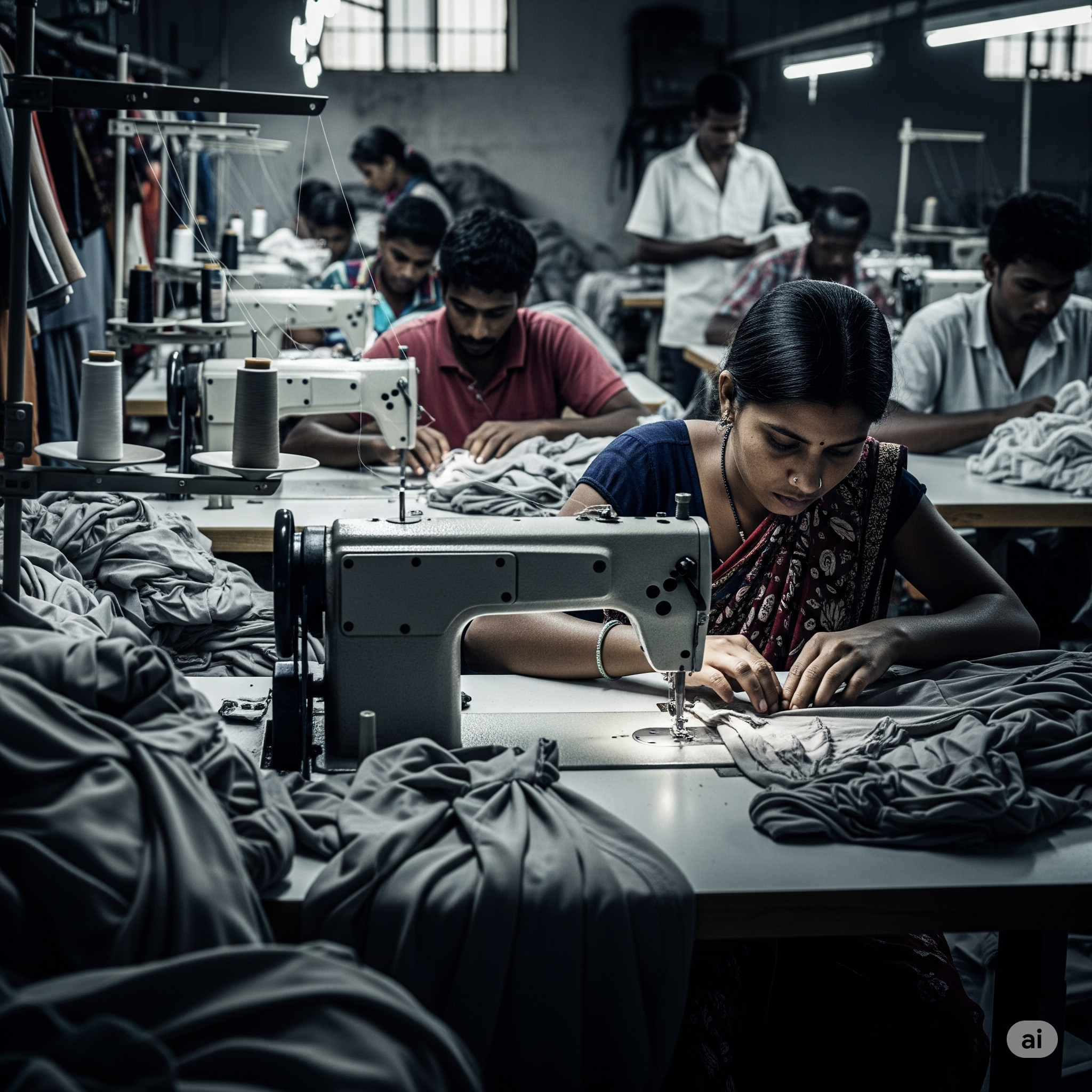That trendy top, the incredible sale find – who really pays the price for its low cost? It's a question many of us don't ask, but the answer reveals a stark reality. Someone always pays the real price, and it's often the garment workers behind the seams, working long hours in unsafe conditions for unfair pay. Ethical fashion isn't just a trend, it's a step toward valuing every human in the supply chain. Join us as we look behind the seams.
The Hidden Figures Behind Your Clothes
Our clothes don't magically appear on racks. There's a human story woven into every stitch, often belonging to the garment worker – the unseen backbone of the fashion industry. These individuals are often incredibly skilled, but their hard work rarely translates into a fair living. The numbers tell a sobering tale: The fashion industry employs roughly 75 million garment workers worldwide. Shockingly, less than 2% of these workers earn a living wage, which is the bare minimum needed to cover essentials like food, rent, healthcare, and education. Imagine working full-time, yet still not being able to afford basic necessities for yourself or your family. That's the daily reality for millions, all because of the relentless pressure from brands that trickles down, forcing them into truly unfair situations.
A System Built on Unfairness
The fast fashion system often demands an inhumane pace. Garment workers are often forced to work 14 to 16 hours a day, 7 days a week. During busy seasons, workdays can stretch to 2 or 3 AM just to meet impossible deadlines. This isn't just grueling; it's a direct violation of basic human rights. Consider this: In some factories, workers reportedly earn as little as 4 cents per garment or a salary around $556 per year, which often requires working at least 18 hours a day, with only one day off per month. This isn't just low pay; it's often wage theft, with workers being denied earned pay, not receiving overtime, or being paid below even the legal minimum wage. In the past, investigations in places like California found workers paid as little as $4 an hour despite a $10 minimum wage at the time. This massive workforce is also predominantly women, making up to 80% of garment workers, who frequently experience verbal and physical harassment as well as sexual abuse, making their workplaces not just exploitative, but dangerous on multiple levels.
Beyond the Bargain Bin, Unsafe Conditions and Worse
The dangers these workers face go beyond just long hours and low pay. Factories frequently lack emergency exits, proper ventilation, or basic health protections. We've seen the tragic consequences of this negligence. The Rana Plaza collapse in Bangladesh in 2013 killed 1,134 workers and injured thousands. This event laid bare the widespread and dangerous conditions endemic in the industry, where workers are often literally risking their lives. Beyond structural dangers, many workers are exposed to hazardous chemicals used in dyeing and finishing processes without proper protective gear. This leads to severe health issues, including respiratory problems, skin diseases, and even cancer. As if this wasn't enough, the darker side of the supply chain still harbors child labor and modern slavery, especially in countries where laws are poorly enforced. The lure of cheap labor fuels these abhorrent practices, making that bargain price tag come at an unimaginable human cost.
The Global Ripple Effect, When Orders Dry Up
The pressure cooker environment for garment workers is often created by the brands themselves. Brands pressure suppliers by demanding the lowest possible prices and unrealistic turnaround times. This forces factories to cut corners – usually by underpaying and overworking laborers, neglecting safety, and operating unethically. The precariousness of their situation becomes brutally clear during crises. During the COVID-19 pandemic, mass cancellations of orders by major brands led to an estimated $40 billion in unpaid work for garment workers globally. This left millions without wages or jobs, deepening poverty for already vulnerable communities. This shows how supply chain practices, driven by a thirst for cheap and fast, directly lead to widespread garment worker exploitation and immense human suffering.
Ethical Fashion: A Human-Centered Path Forward
There is a better way. Ethical fashion offers a different path, one that values human dignity over profit margins. Ethical fashion brands operate with a different philosophy: they pay fairer wages, provide safer conditions, and prioritize transparency in their supply chains. These brands go beyond just the basics; they often invest in worker education, promote gender equality, and support community improvements where their factories are located. By choosing ethical and sustainable fashion, you help protect workers from exposure to hazardous chemicals, provide them with proper training and fair pay, and support empowerment and upliftment—especially for the predominantly female workforce. It's about recognizing that fashion has the power not just to adorn, but to do good.
Final Thoughts
The human cost of fast fashion is immense, born from exploitation and unsafe practices. But your choices have power beyond the price tag. By supporting ethical clothing and demanding transparency, you contribute to a fashion industry that values every human in the supply chain. Let's make sure no one pays an unfair price for our clothes.

